Chennai: Mylapore has its temples, Egmore its colonial relics, Anna Nagar its food — Chennai’s must-visit circuit seems set in stone. But crowded Saidapet, often dismissed as a ‘slum’ for migrants, has its own treasures: temples, Nawab-era relics, traditional weavers’ homes, and stalls selling everything from dosas to biryani.
Now, heritage and conservation collective Madras Inherited is lifting the lid with a walk through its layered past.
“Usually, when people think of Saidapet, they think of congested streets and a historically insignificant locality. But we wanted to bring people here to tell them its story,” said 26-year-old guide Shruthi S, who led a group of 16 people — a mix of Chennai locals and out-of-towners — through the neighbourhood’s narrow lanes on a Sunday morning. Binder in hand, packed with old maps and photos, she stopped at key points to reveal the histories hidden in plain view.
The two-hour walk, titled ‘Settlements and Stories of Saidapet,’ starts at the intricately carved Karaneeswarar Temple, said to have been built in the 1800s. The street outside is lined with vendors selling flowers, fresh vegetables, and crispy dosas, with the clatter of trains from the nearby Saidapet railway station echoing in the background. The walk ends at the Mari Hotel, where participants get a taste of its famous ‘vada curry’.
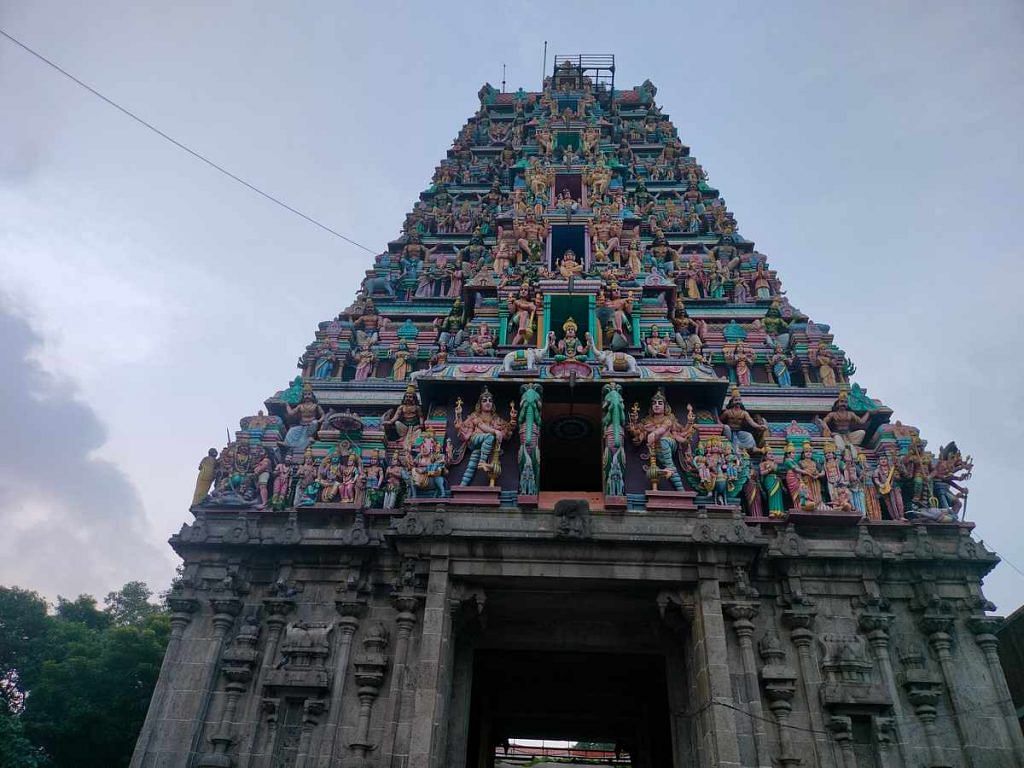
At the start of the walk, there are frequent whiffs of jasmine, rose, oleander, kadhamba, and arugam pullu (Bermuda grass) from the flower shops and temple stalls.
As the group moves deeper into Saidapet’s narrower lanes, the floral fragrance shifts to the aroma of steaming chicken biryani from large vessels at roadside shops. The narrow streets, flanked by houses and storefronts, eventually lead to a major stop: the Jama Masjid, built in the 18th century by Saadatullah Khan, the first of the Nawayath Konkani Nawabs to rule the area.
“The honeycomb vaulted ceiling is similar to Safdarjung tomb in Delhi,” Shruthi, a research scholar with Madras Inherited, said.
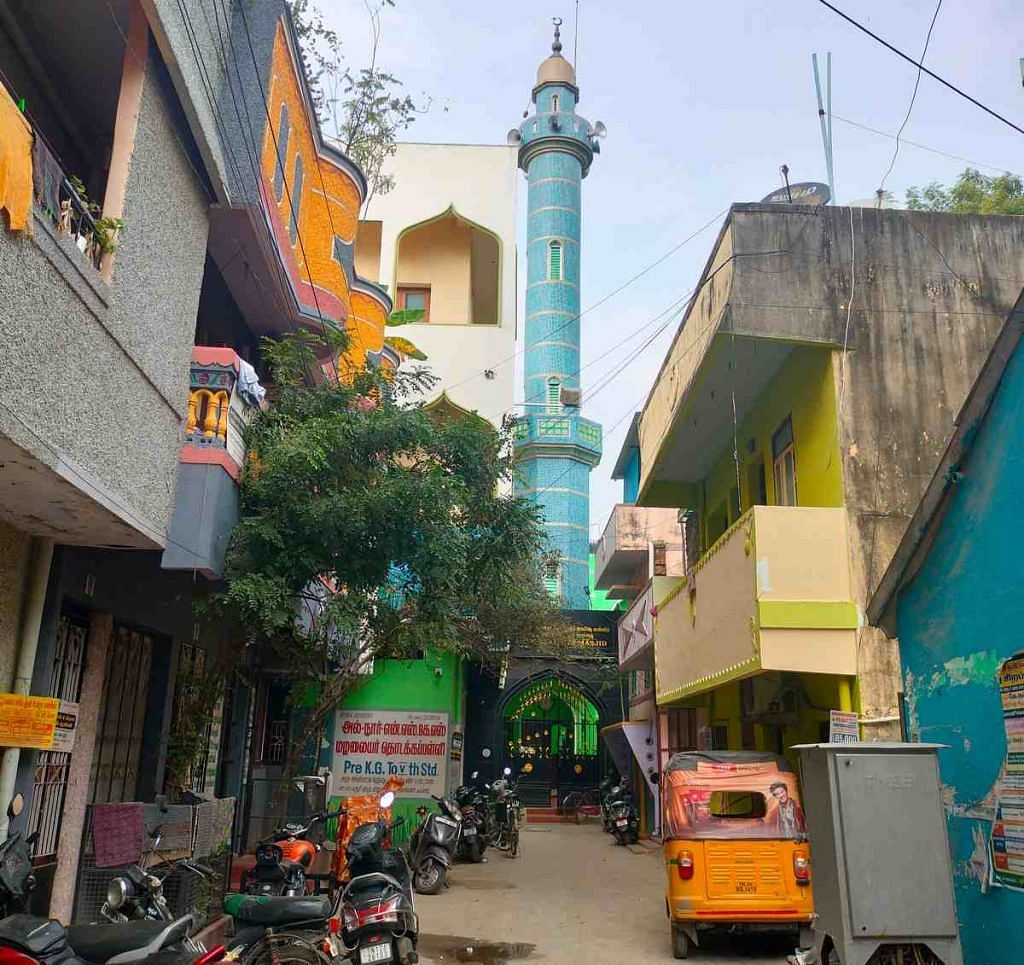
Also Read: ‘Chhoti Si Baat’ to ‘Piya Ka Ghar’, heritage walk takes you through Basu Chatterjee’s Bombay
Cramped lanes, hidden histories
Mylapore’s stately Agraharam houses, with their arched windows and carved details, are often held up as the face of ‘traditional’ Chennai, but areas like Saidapet and Teynampet — with their own deep histories — are usually ignored.
About 12 km from Chennai Central, it’s been a key entry point to the city, drawing waves of migrant workers from Tamil Nadu and beyond. Once the headquarters of Chengalpattu district, it’s now firmly part of Chennai — a story that Madras Inherited are trying to illuminate through their Sunday walk.
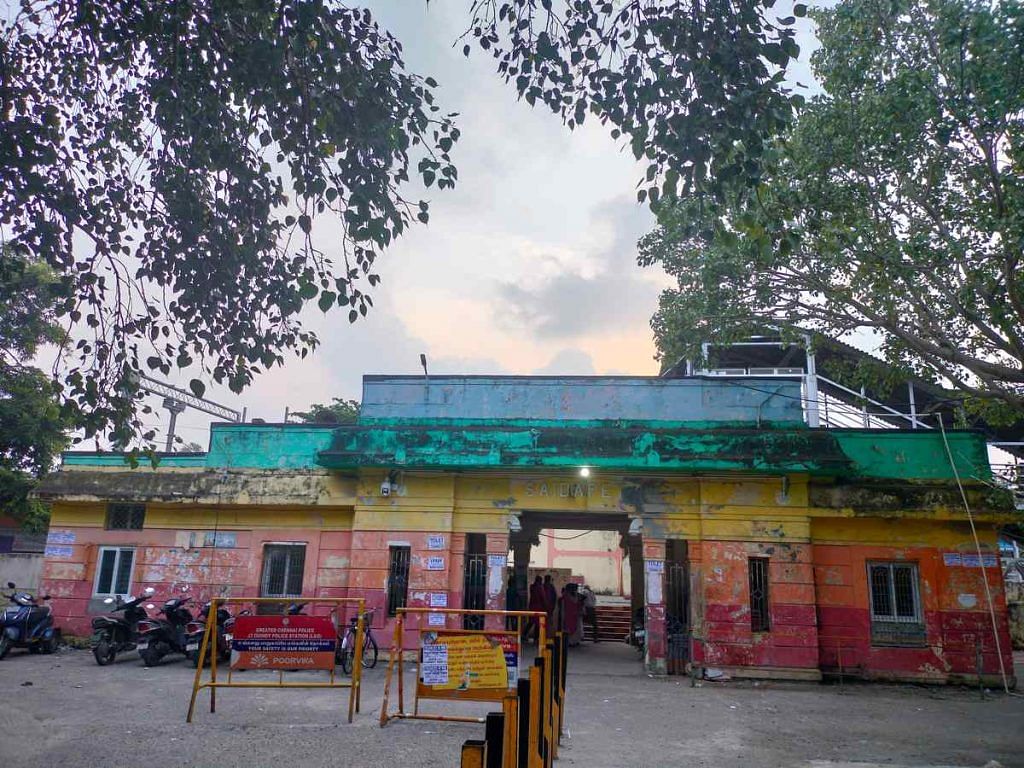
But Saidaipet does not reveal itself easily, and visitors really have to know where to look. The neighbourhood has 97,428 residents, according to a 2024 report by the International Journal of Research Culture Society (IJRCS). It’s home to weavers, handloom workers, and generations of migrant families. Over time, old colonial bungalows and traditional Tamil Nadu homes have been boxed in by concrete buildings and cramped streets.
Amid the sprawl of the 20th-century concrete buildings, a few traditional Tamil houses from the weaving community still survive, with tile-thatched roofs, two-pane wooden doors, and long windows. Many are crumbling and in need of repair, but they still hint at a long-lost era.
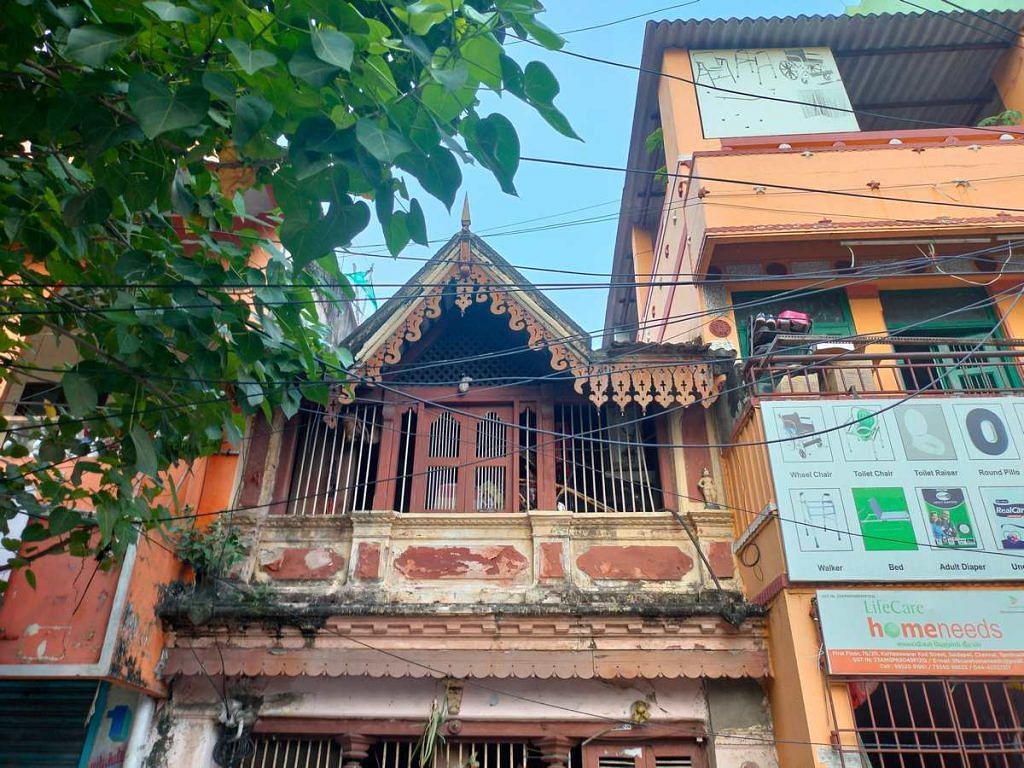
The locality also claims a link to Tamil poet and social reformer C Subramania Bharati, who briefly lived here while evading arrest from the British in the early 1900s. The memory of his stay is kept alive through a street named after him.
One notable stop in the Saidapet heritage walk is the Mahatma Gandhi Library (Mahatma Gandhi Nool Nilayam), founded in 1952. The library, which houses only Tamil-language books, recently underwent an expansion, with a new building inaugurated on 17 November this year. The first sight that greets visitors as they enter is a bust of Mahatma Gandhi, unveiled in 1952 by then Chief Minister K. Kamaraj. Among its collection are books on Gandhi and India’s independence struggle, along with old manuscripts of works by eminent Tamil authors, including Kalki.
“The colonial past is just one aspect of Madras’s history. There are people who lived here in the city. And there are people who migrated here. We want to shed light on them as well,” Shruthi S told ThePrint.
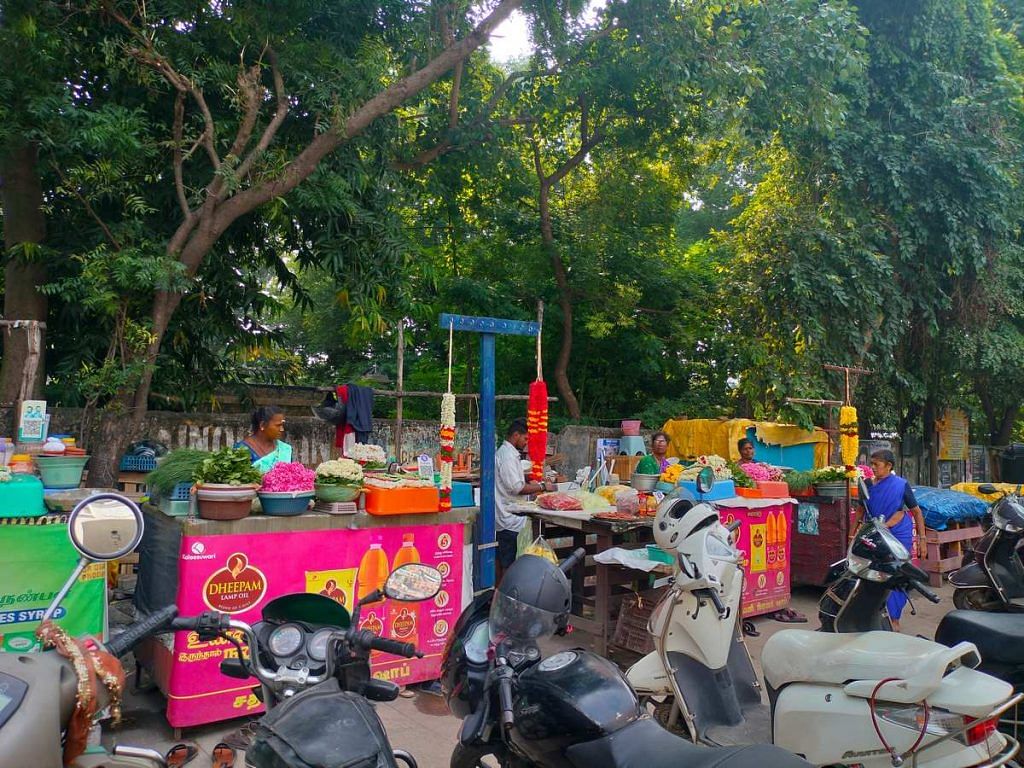
Also Read: What changed Madras to Chennai? Pink buses, Periyar, Pa. Ranjith
Saidapet’s signature dish
Saidapet is inseparable from vada curry. It’s a connection immortalised in the popular phrase “Sabalangadi giri giri, Saidapet Vada Curry!” — a refrain that has no particular meaning but is familiar to anyone living in the city.
And much like Saidapet itself, vada curry has a scrappy origin story. It’s said to have been created at the Mari Hotel as a way to use up leftover vadas and onions, transforming them into a spicy, savoury curry. The recipe remains the same, except that fresh vadas are used for it.
For Kavitha Krishnamoorthy, Sharadha Rajaram, and Beena B Mohan — three friends in their 60s celebrating their recent birthdays with the walk — vada curry was a novelty. Seated in the packed Mari Hotel, they tried to puzzle out the recipe while scooping it up with a ghee roast dosa.
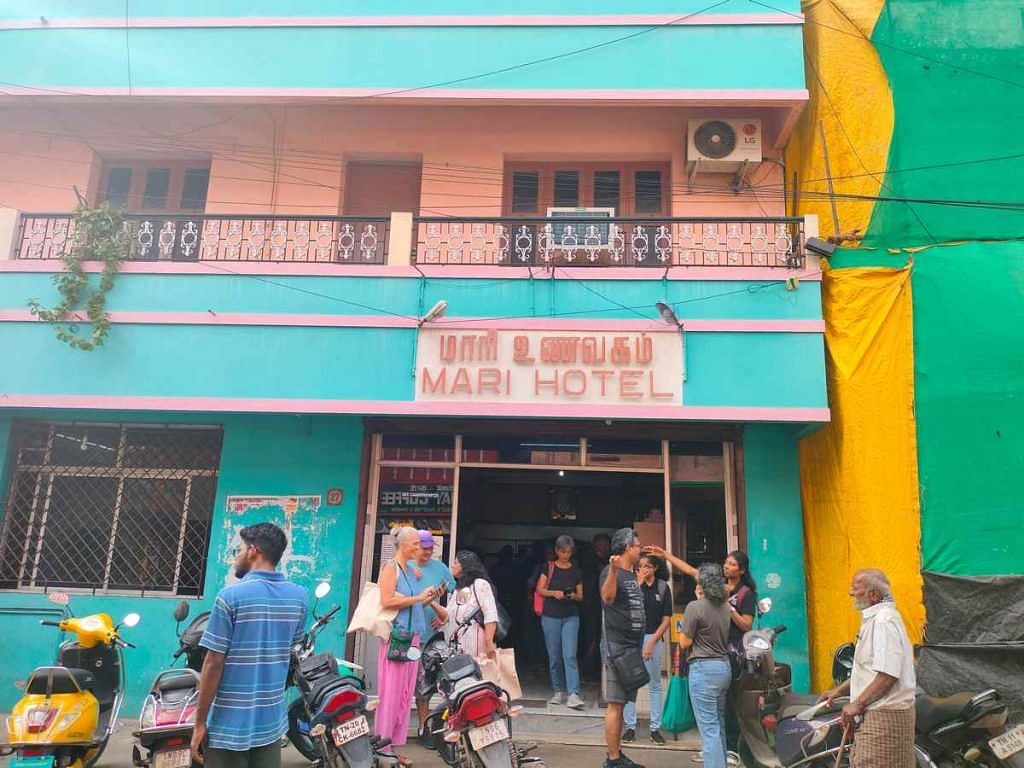
“It’s fresh medhu vada crumbled into a gravy,” offered a stranger in his 70s sitting across from them. He was eating the same dish and couldn’t help adding: “If you’re eating at Mari, it’s dosa and vada curry. That’s it.”
After the Madras Inherited walk, as participants tucked into vada curry, some were in a reflective mood.
“The walk offered a different perspective of the place,” said 35-year-old Solomon Manoj, a Chennai-based HR professional. “If we come to Saidapet, we see this chaotic, crowded place. But in these walks, you can slow down and learn about the culture and history.”
(Edited by Asavari Singh)






